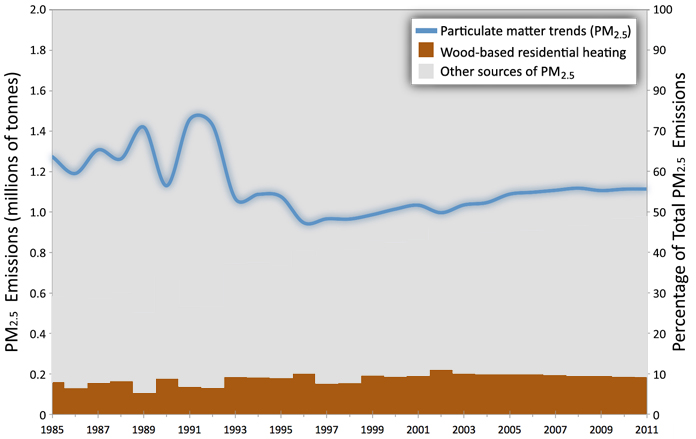October 5th, 2013
Last month, the Canadian Environmental Health Atlas, a collaborative research project that examines the relationship between environmental and human heath, launched its website. This type of research is essential for understanding preventative measures for minimizing health risks by drawing linkages between sustainable development and human health. Take, for example, the relationship between fine particulate matter (PM2.5) emissions and community health, particularly focusing on scale.
The graph below shows trends in PM2.5 emissions in Canada over the last 30 years. PM2.5 consists of tiny pieces of solid or liquid that are 2.5 microns or less than diameter, and, when inhaled can travel deep into the body causing severe heart and lung issues1. The trends below show that, although PM2.5 emissions decreased between the mid-1980s to the mid-1990s, they have stabilized (or perhaps slowly increased) since 1996. In addition, we also see that a large portion of PM2.5 emissions result from residential heating through woodstoves, contributing to almost 10% of all fine particulate emissions in Canada. Therefore, rural and remote communities ironically suffer from higher fine particulates than some urban centres. Implementing woodstove exchange programs that replace outdated inefficient woodstoves for higher efficiency models are particularly important for improved health in small communities. The small steps we take to increasing environmental quality in communities can go a long way in increasing our vitality.

Data for graph retrieved from Environment Canada
1 BC Air Quality - http://www.bcairquality.ca/101/common-pollutants.html
- Log in to post comments


CRC Comments